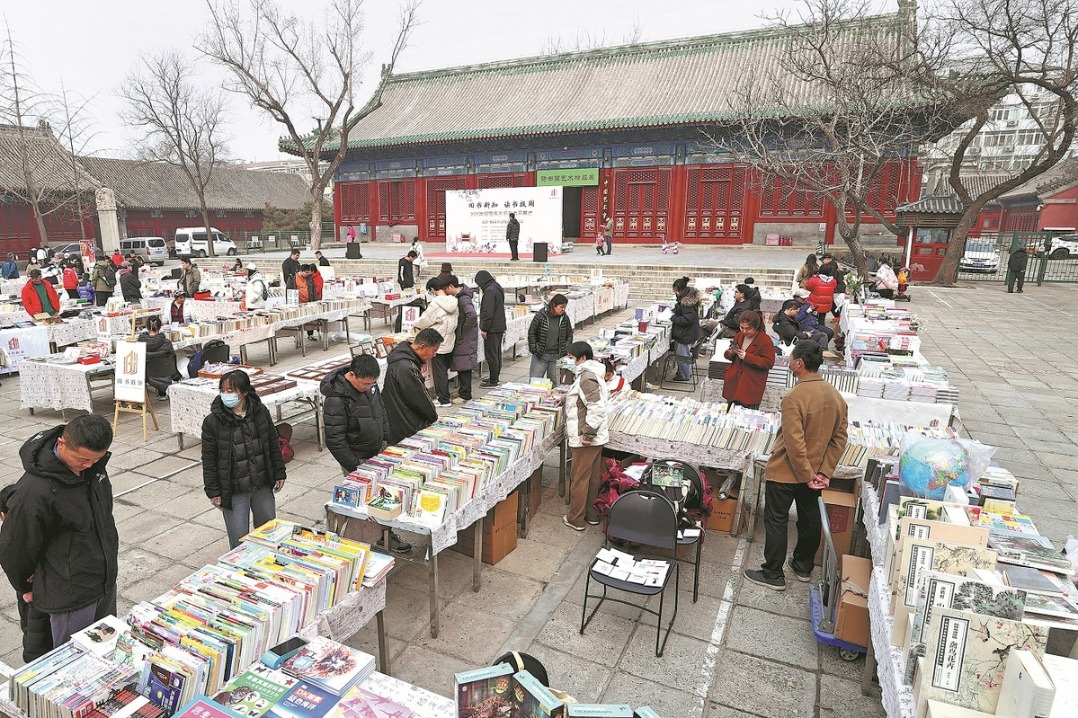Wheat field helps fight desertification in Xinjiang


In China's vast Taklimakan Desert, also known as the "sea of death", a remarkable feat is taking place.
A large wheat field has been successfully planted on a trial basis on the southwestern edge of the desert in Makit county, part of Kashgar prefecture, Xinjiang Uygur autonomous region.
The wheat field now covers over 400 hectares, making it China's largest pure-desert wheat field and marking a new approach to combating desertification through sustainable agriculture.
"An average yield of 4.4 metric tons per hectare surpassed expectations," Wang Jianjun, deputy general manager of Xinjiang Wuzheng Green Agricultural Development Co, said earlier this month, adding that the harvested wheat is top grade.
Makit is surrounded by sand on three sides, and desert accounts for 90 percent of its total area.
The county has over 36,000 hectares of mild saline-alkali land, 13,000 hectares of which is severe, making sand control and disaster mitigation urgent.
To explore models for improving desert saline-alkali land, Shandong province, which is partnered with Xinjiang as part of an assistance program, has invested 30 million yuan ($4.1 million) to support Xinjiang Wuzheng as it strives to plant wheat on 1,333 hectares of desert land.
"Sand control and reclamation are significant for ensuring food security, improving the ecological environment, increasing regional income and promoting sustainable agricultural development and technological innovation," said Gu Quanjun, head of the company's wheat base program.
The biggest obstacle to planting wheat in the Taklimakan Desert is constant shifting sands. For that reason, the land needs to be quickly planted with vegetation once the sand is leveled; otherwise, a sandstorm could revert the planting grounds to their original state.
Traditional wheat planting methods also face other challenges, including low soil organic matter and nutrient content, high evaporation rates, poor water and fertilizer retention and high salinity.
To ensure successful planting, "we use a precise, quantitative, and high-frequency irrigation method to deliver the necessary nutrients and water to the wheat roots", Gu said.
"The key factor for successful trial planting is our innovative development of a systematic management application technology tailored to the desert's unique climate and soil conditions, addressing various issues at every planting stage," he said.
Xinjiang Wuzheng is also working with research institutes, including the Chinese Academy of Agricultural Sciences and the Shandong Academy of Agricultural Sciences, and using technologies such as satellite positioning and remote sensing monitoring.
The company said its collaborative efforts have enabled precise crop planting, fertilization and pest control management, creating a replicable and scalable standardized technique for desert wheat cultivation.
Yang Jun, an official from the pairing assistance program in Rizhao, Shandong, said the next step is to expand the winter wheat planting area.
"In the next three to five years, our goal is to plant wheat on over 3,333 hectares of desert land," Yang said. "This will enhance the quality and efficiency of the region's agriculture while promoting comprehensive rural vitalization."
Xinjiang has recently beefed up its efforts to foster agricultural productivity on desert land.
In late April, a research team from the Chinese Academy of Agricultural Sciences successfully planted and rapidly cultivated a trial plot of rice in a desert greenhouse in Hotan prefecture, Xinjiang.
The Hotan region in southern Xinjiang has abundant light and heat resources.
This breakthrough in rapid crop cultivation technology in desert greenhouses will also provide technical support for year-round crop production and rapid breeding in the southern deserts of Xinjiang, according to the academy.
Contact the writers at zhaoruinan@chinadaily.com.cn
- Xi meets Senegalese PM
- Centenarian veteran embodies patriotism and resilience
- China's revised anti-unfair competition law to take effect Oct 15
- China revises public security administrative penalty law
- Maritime emergency rescue drill held in Sansha, Hainan
- Chinese researchers reveal key mechanism behind locust outbreaks




































